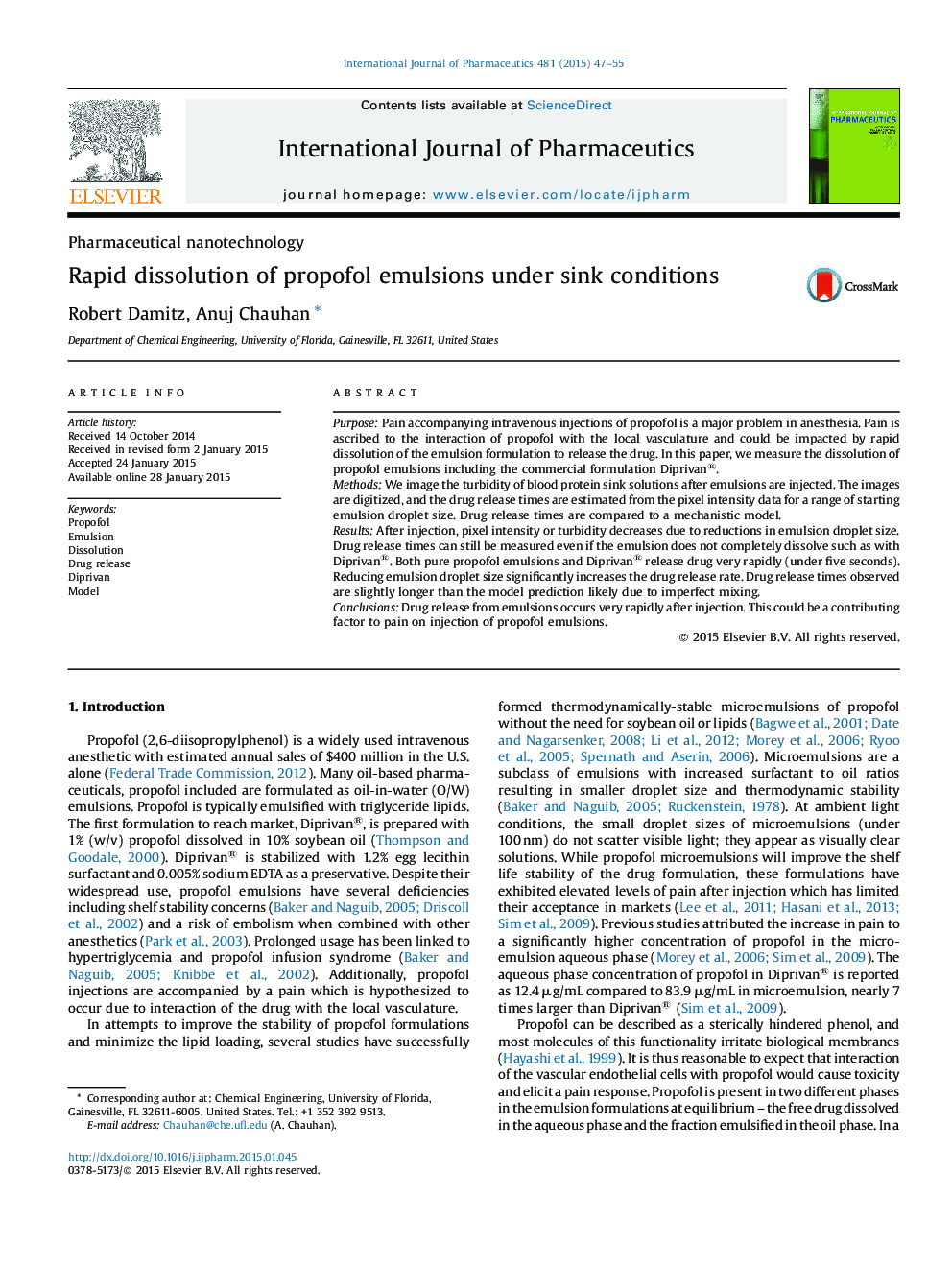| Article ID | Journal | Published Year | Pages | File Type |
|---|---|---|---|---|
| 2501526 | International Journal of Pharmaceutics | 2015 | 9 Pages |
PurposePain accompanying intravenous injections of propofol is a major problem in anesthesia. Pain is ascribed to the interaction of propofol with the local vasculature and could be impacted by rapid dissolution of the emulsion formulation to release the drug. In this paper, we measure the dissolution of propofol emulsions including the commercial formulation Diprivan®.MethodsWe image the turbidity of blood protein sink solutions after emulsions are injected. The images are digitized, and the drug release times are estimated from the pixel intensity data for a range of starting emulsion droplet size. Drug release times are compared to a mechanistic model.ResultsAfter injection, pixel intensity or turbidity decreases due to reductions in emulsion droplet size. Drug release times can still be measured even if the emulsion does not completely dissolve such as with Diprivan®. Both pure propofol emulsions and Diprivan® release drug very rapidly (under five seconds). Reducing emulsion droplet size significantly increases the drug release rate. Drug release times observed are slightly longer than the model prediction likely due to imperfect mixing.ConclusionsDrug release from emulsions occurs very rapidly after injection. This could be a contributing factor to pain on injection of propofol emulsions.
Graphical abstractFigure optionsDownload full-size imageDownload high-quality image (109 K)Download as PowerPoint slide
